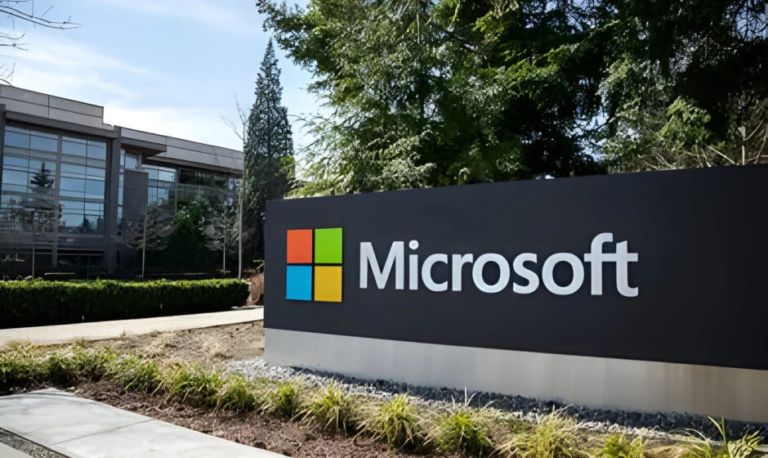Digital ink technology has revolutionized the way we interact with our devices, merging the tactile sensation of traditional writing with the dynamic capabilities of digital platforms. In this comprehensive guide, we will delve into the intricacies of digital ink, its applications, and how https //www.microsoft.com /ink is leading the charge in this innovative domain.
Understanding Digital Ink
Digital ink refers to the technology that enables users to write, draw, and interact with their screens using a stylus or digital pen, closely mimicking the experience of using pen and paper. This technology is not just limited to text input but extends to various creative and professional applications such as digital art, note-taking, and even complex mathematical equations.
Digital ink works through a combination of hardware and software. The hardware includes devices like styluses and touch-sensitive screens, which can detect the pressure and angle of the pen to produce varying line thickness and effects. The software interprets these inputs to render the ink on the screen, ensuring it feels natural and responsive.

The Evolution of Digital Ink
The concept of digital ink has evolved significantly over the years. Initially, digital ink technologies were rudimentary, often producing jagged lines and lagging behind the user’s movements. However, with advancements in hardware sensitivity and software algorithms, today’s digital ink is almost indistinguishable from traditional ink.
Microsoft has been at the forefront of this evolution, with https //www.microsoft.com /ink being a prime example of their innovative efforts. The platform provides a seamless and intuitive digital inking experience across various devices, from Surface tablets to Windows PCs.
Key Features of HTTPS //www.microsoft.com /ink
Natural Writing Experience
One of the standout features of https //www.microsoft.com /ink is its ability to provide a natural writing experience. The technology is designed to mimic the pressure sensitivity and angle detection of a real pen, allowing for fluid and precise strokes. This is particularly beneficial for artists and designers who require accuracy and nuance in their work.
Integration with Microsoft Office
https //www.microsoft.com /ink is deeply integrated with Microsoft Office, making it a powerful tool for productivity. Users can annotate documents in Word, highlight key points in PowerPoint, and even solve equations in OneNote. This integration ensures that digital ink is not just a standalone feature but an integral part of the Microsoft ecosystem.
Collaboration and Sharing
In today’s collaborative work environment, the ability to share and co-edit documents is crucial. https //www.microsoft.com /ink facilitates real-time collaboration, allowing multiple users to annotate and edit documents simultaneously. This is particularly useful in educational settings, where teachers can provide instant feedback on students’ work.
Customization and Personalization
https //www.microsoft.com /ink offers a high degree of customization, enabling users to personalize their writing experience. From selecting different pen types and colours to adjusting the sensitivity settings, users can tailor the digital ink to suit their preferences. This level of customization ensures that everyone, from casual note-takers to professional artists, can find a setup that works for them.
Applications of Digital Ink
Education
Digital ink has found a natural home in the field of education. Teachers can use digital ink to create interactive lessons, annotate students’ work, and provide real-time feedback. Students, on the other hand, can take notes, draw diagrams, and engage with learning materials more interactively. The versatility of digital ink makes it a valuable tool in both traditional and remote learning environments.
Professional Use
In the professional world, digital ink is used for a variety of tasks, from signing documents to brainstorming sessions. Architects and engineers can sketch out designs and make notes directly on digital blueprints. Business professionals can use digital ink for mind mapping and note-taking during meetings, enhancing productivity and collaboration.
Art and Design
For artists and designers, digital ink provides a powerful medium for creativity. Tools like https //www.microsoft.com /ink offer advanced features such as pressure sensitivity, tilt support, and a wide range of brushes and effects. This allows artists to create detailed and nuanced works of art that would be difficult to achieve with traditional media.
Accessibility
Digital ink technology also plays a significant role in making technology more accessible. For individuals with disabilities, digital ink can provide an alternative means of interaction. For example, those who have difficulty using a keyboard can use a stylus to write or draw on a screen, providing a more intuitive and natural way to interact with their devices.

Future of Digital Ink
As technology continues to advance, the future of digital ink looks promising. We can expect even more sophisticated hardware that offers greater precision and responsiveness. Additionally, advancements in artificial intelligence and machine learning will enable digital ink software to understand better and predict user input, making the experience even more seamless and intuitive.
Microsoft is likely to continue leading the way in this field, with https //www.microsoft.com /ink serving as a platform for innovation. Future updates may include features such as enhanced collaboration tools, more advanced customization options, and deeper integration with other Microsoft services.
Conclusion
Digital ink has transformed the way we interact with our devices, offering a versatile and intuitive tool for writing, drawing, and collaborating. https //www.microsoft.com /ink stands out as a leader in this space, providing a comprehensive and user-friendly platform that caters to a wide range of needs and preferences. As technology evolves, digital ink is poised to become an even more integral part of our digital lives, bridging the gap between the tactile and the digital in increasingly sophisticated ways.
By embracing the power of digital ink, we can unlock new levels of creativity, productivity, and accessibility, making our interactions with technology more natural and effective. Whether you’re an artist, a professional, a student, or someone with unique accessibility needs, digital ink offers a world of possibilities, and https //www.microsoft.com /ink is at the forefront of this exciting journey.
Also, Read The Following: CQuel Decarbonisation Solutions.


